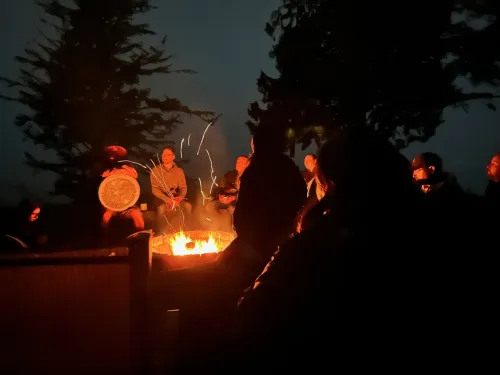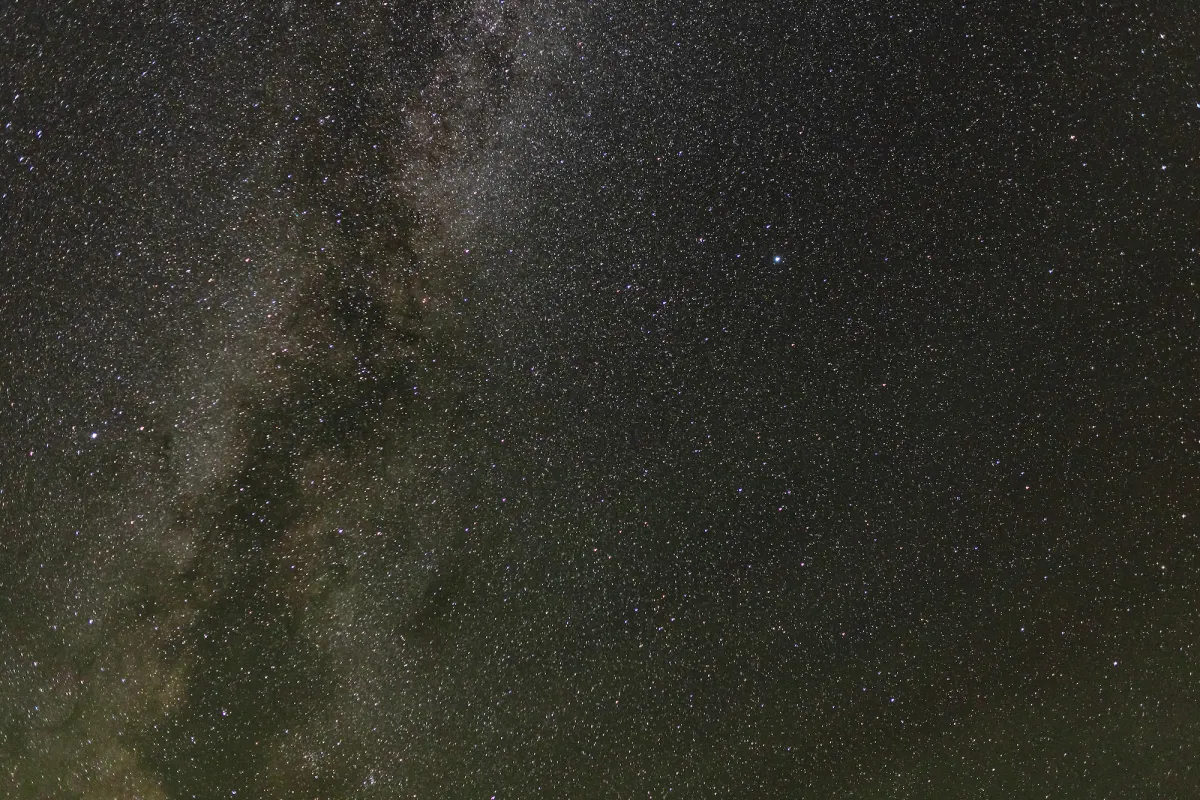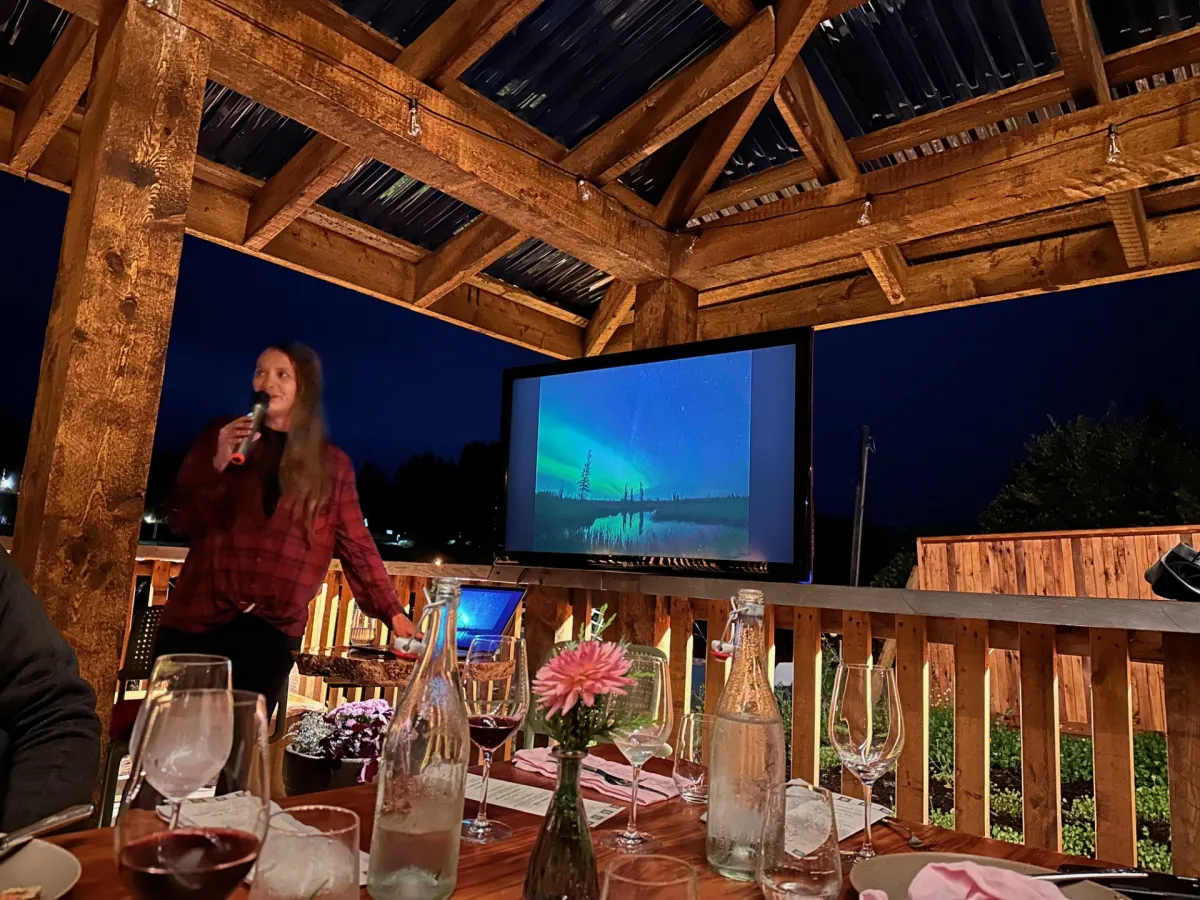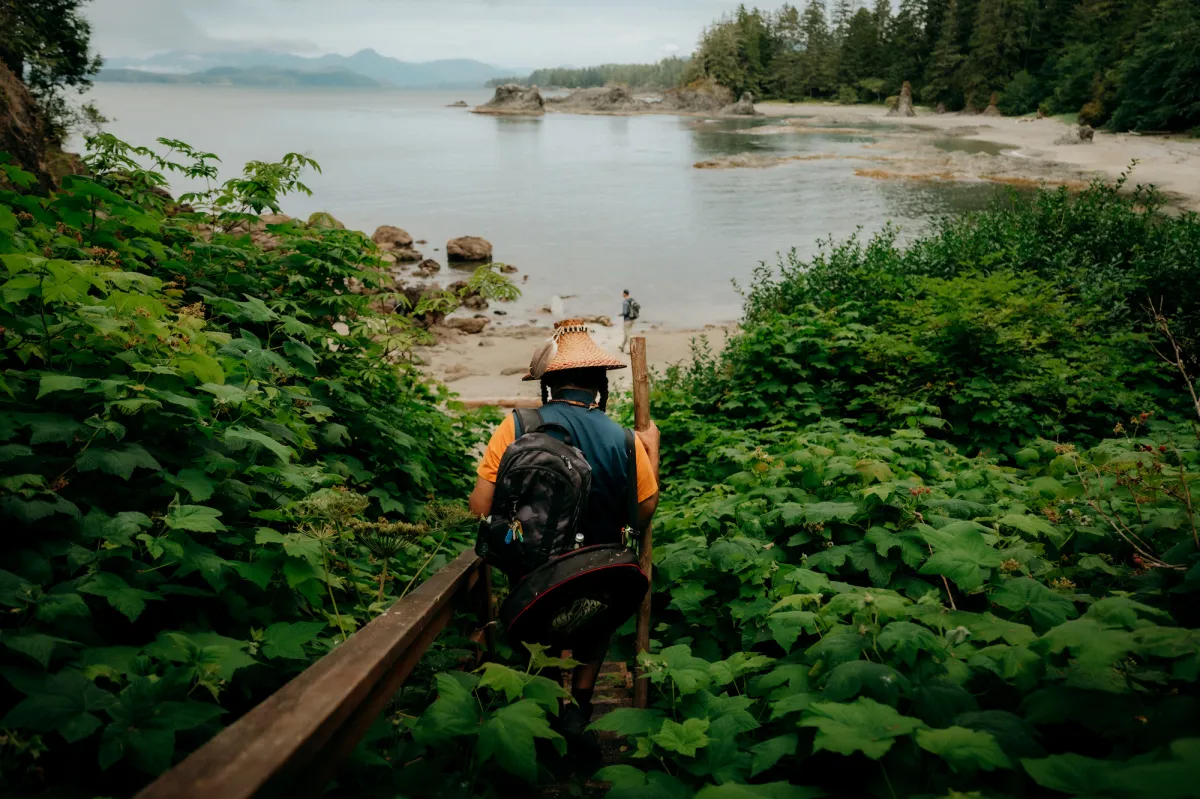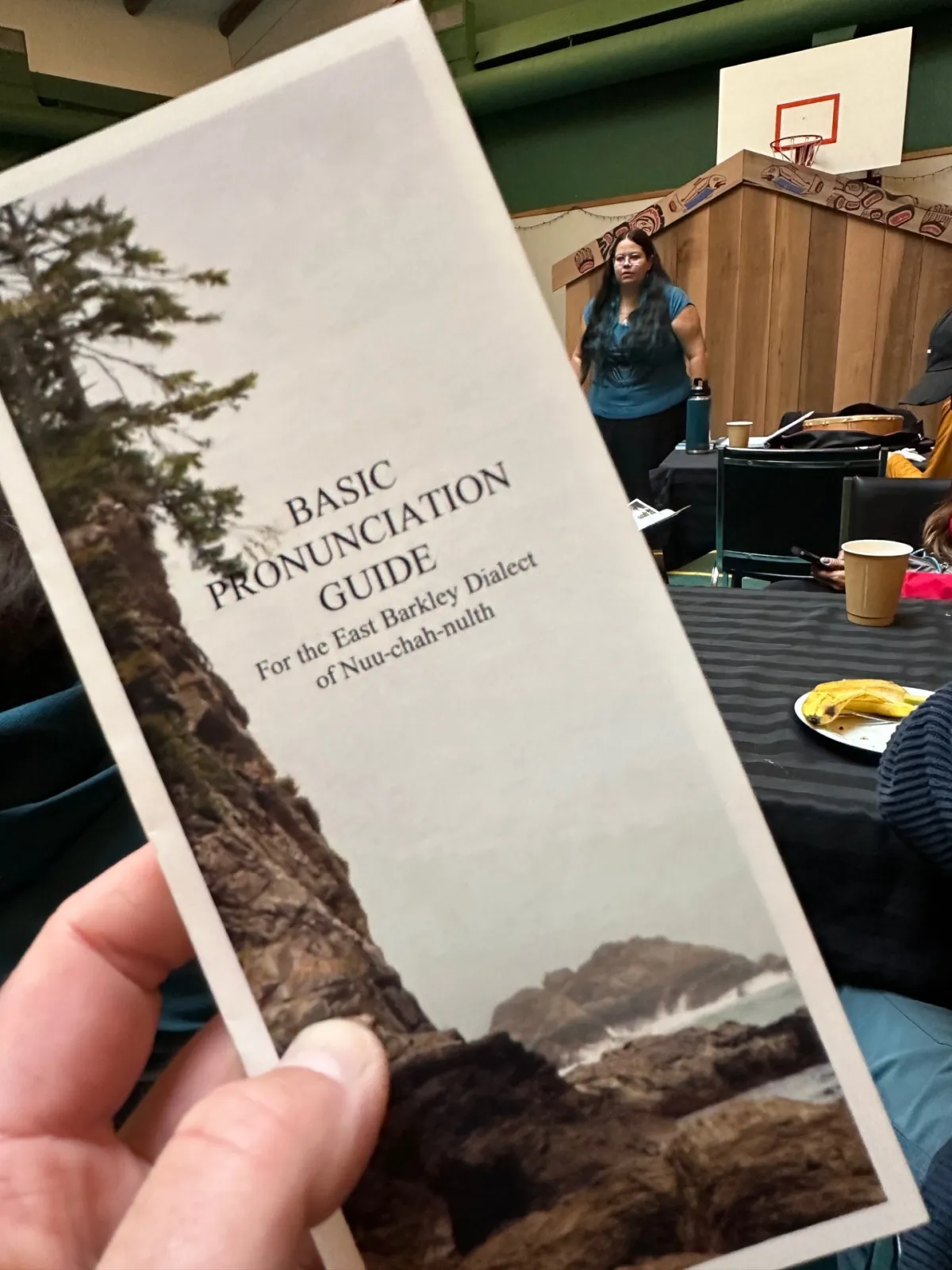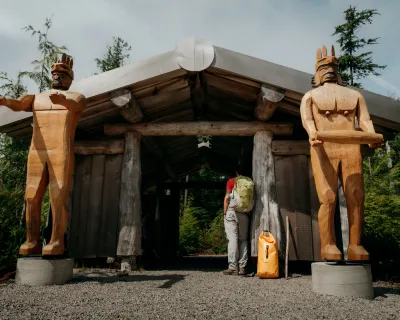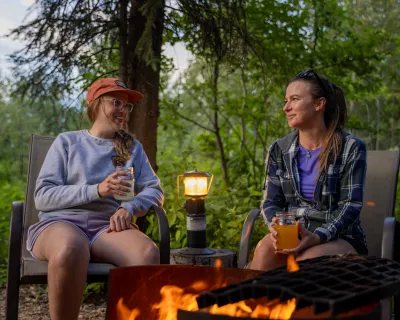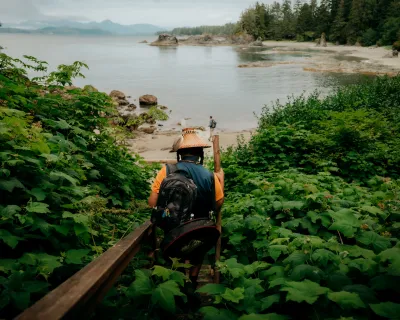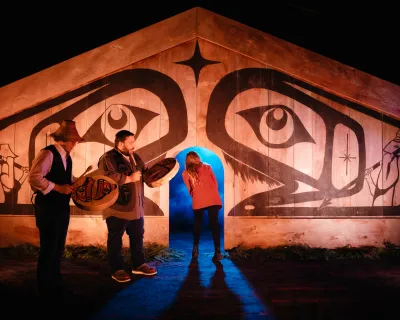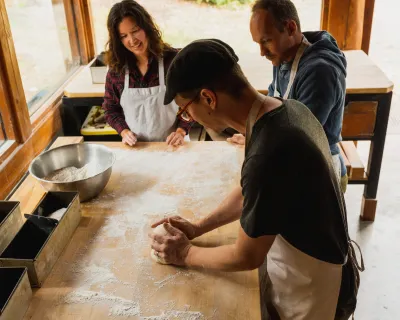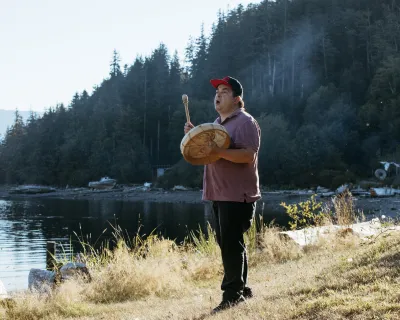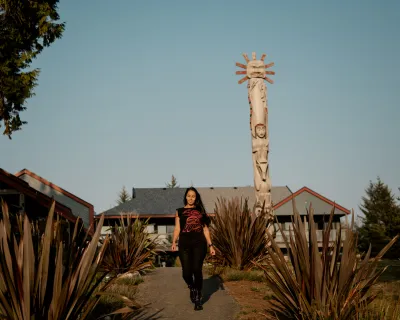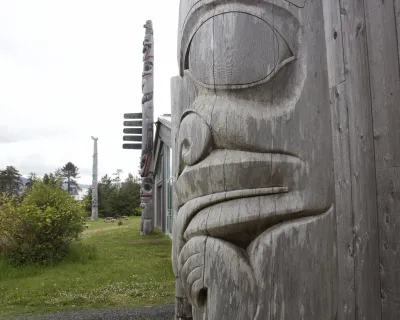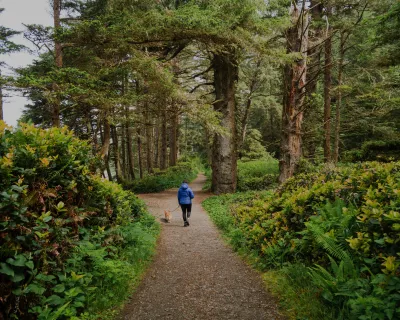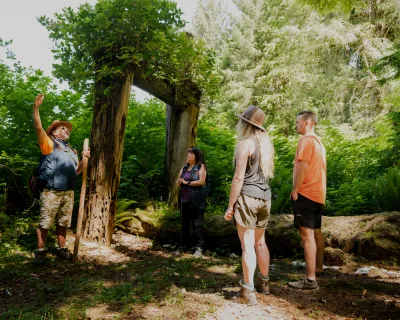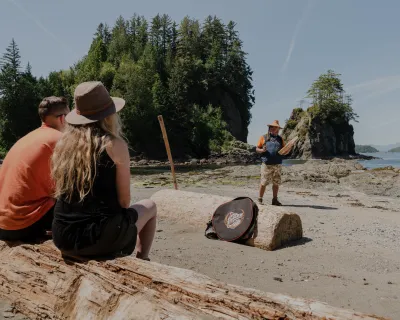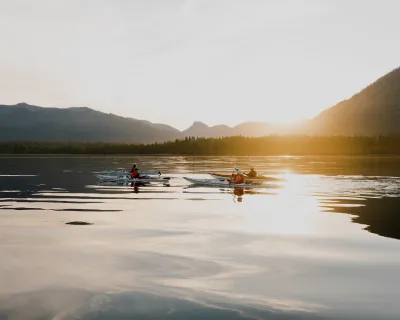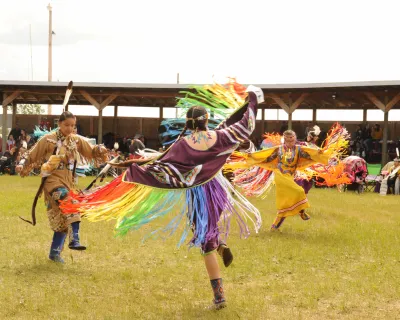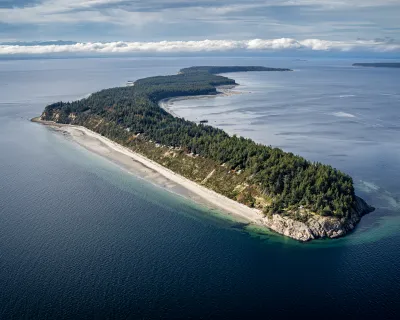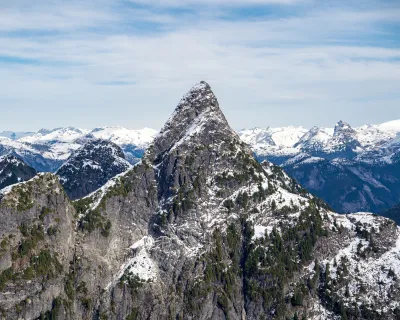Three stars guide Huu-ay-aht Nation in preserving dark sky, culture
Huu-ay-aht First Nations / Bamfield, BC — An unspoken battle is underway between natural and artificial light, and Bamfield BC has quietly stepped to its forefront.
Sure I could start by telling you about the pirates' treasure, the cultural wonders or the marine-rich inlet that flows between the west and east sides of the ocean-stoked community of Bamfield.
But instead I ask you to stop reading this, go outside—ideally, at night—and simply look up.
"The dark sky and the stars unite us," teaches our Huu-ay-aht guide qiic̓ qiic̓a (in english, Keats Keatsa) "the stars and the night sky remind us that everything is one."
Long a dark sky haven, the small community of Bamfield—along Vancouver Island's west coast—is getting busier. With a new chip-sealed road replacing the gravel logging road earlier this year, it now takes about an hour's drive from Port Alberni to Bamfield.
Should Bamfield now move the way of other towns and cities, installing lights everywhere, Huu-ay-aht youth may only learn about the night sky through books and apps. Yet another chisel away from real life and the power you gain from being outdoors.
The preservation of this dark sky is now a critical piece to Keats' work, given that much of Huu-ay-aht's destiny is written in those stars.
"We have a responsibility to not only preserve our waters and our land, but also our sky," explains Keats, many of whose traditional teachings relate to the sky.
Why three stars?
"The three stars represent our past, present & future…always reminding us to think of where you were in the past, where you are now and what is your future," explains Keats, en route to his ancestors' ancient beachfront village site of Kiix̣in.
Keats is known to many in the ZenSeekers community, as a cultural guide at Huu-ay-aht First Nation's Kiix̣in Tours (and occasional ZenSeekers contributor). It was skookum to have him guiding a group of us star seekers this past September at Huu-ay-aht First Nations' Three Star Dark Sky Festival.
As a Huu-ay-aht Knowledge Keeper of his elders, and their elders' ways, it's Keats's responsibility to see that present day citizens keep Huu-ay-aht's traditional perspectives in mind, and to approach their lives with recognition to "past, present and future," and allowing these stars and perspective to steward life's decisions.
Learning to say "star" in Nuu-chah-nulth
Over the festival experience we also learned about Nuu-chah-nulth language. Huu-ay-aht First Nations is part of a tribal council of 14 First Nations, Nuu-chah-nulth, given this collection of Nations share language across Vancouver Island.
Say "Klahowya" (greetings) to Hinatinyis - a so passionate Nuu-chah-nulth language teacher and like Keats, a Huu-ay-aht knowledge keeper.
Within our one-hour language session with Hinatinyis we learned the word for star.
LISTEN > hear the Nuu-chah-nulth word for 'star'
Here's a quick pronunciation guide
star: Ta - Toose
Ta - TAA (strong "a")
Toose - like tooth, but toose, TA-Toose
ZenSeekers is now into its 6th year of operations as your guide to transformative travel, and as lead to the publication, I've realized learning a language is like going to the gym for your brain. Learning language builds character, focus and purpose!
It's one more way to unite us as a community, towards the aim of natural and cultural preservation.
How the night sky unites us all
As aurora photographer Jeanine Holowatuik, of Northern Escape Photography, introduced in one of the many educational talks during Huu-ay-aht's Three Star Dark Sky festival:
"Think about it, during the pandemic, the comet Neowise filled the sky and brought us all together, or how about everyone online during aurora storms sharing pictures of the wonder that the night sky is bringing them."
For Keats, as he has learned and shared his Huu-ay-aht culture over the years, he has also realized the sky brings us together and must be protected.
Through the Three Star Dark Sky Festival and the continued guidance of knowledge keepers like Keats and Hinatinyis, the first of many steps towards preservation and recognition of this treasured natural resource have been taken. The next steps could be yours.
When You Go
Here are your next steps to experience awe-inspiring dark sky in Bamfield, on Huu-ay-aht homelands, any time of year.
Dark sky viewing & stays in Bamfield Huu-ay-aht homelands offer a solid array of accommodation options. Anyone can simply go to view the dark sky on any day of the year.
Language & cultural learning If you want to take your learning about the "Heltsk-tsawaak" approach to life, meaning that everything is one, consider taking a Nuu-chah-nulth language class starting Sept 30 through the Tla-o-qui-aht First Nation (Tofino) language team (anyone is welcome to join this beginner class taught through ZOOM). Stay tuned via the Tla-o-qui-aht Tribal Parks Facebook page.
Tour & festival info Watch for the return of Huu-ay-aht's Kiix̣in Tours and their Three Star Dark Sky Festival in 2025, or inquire with accommodations including the Bamfield Inn and Outer Shores Lodge for when they might be organizing a group.
Hike under the stars out to this 5,500-year-old village site, a National Historic Site of Canada and uncover the ways Huu-ay-aht approach life, it's wisdom you will gain that leaves you with a deeper connection to yourself and place.
Learn more from Keats from this ZenSeekers coverage about the significance of the wolf to Huu-ay-aht people.
Getting here yes, if you are coming from Victoria, you might be enticed by Google Maps to go via Youbou, BC but note that the road starting just past Lake Cowichan is a non-maintained logging road. We at ZenSeekers recommend getting to Bamfield via Port Alberni, via the new chipped sealed connection.
extend your #IndigenouscoastBC trip Did you know you can connect a few nights stay in Huu-ay-aht First Nations/Bamfield and pair it with a stay in Tofino/Tla-o-qui-aht First Nation via #indigenousCoastBC? Learn how to make this epic road trip and more at IndigenouscoastBC.com.
Like Our Facebook Page
